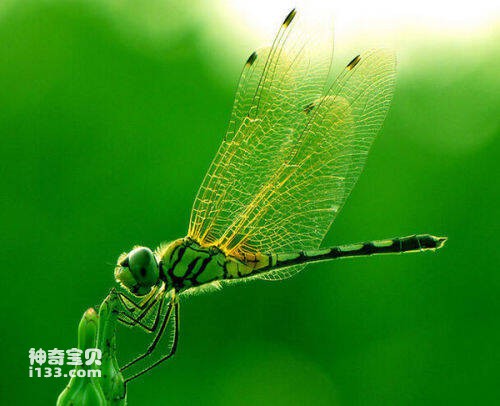The inconspicuous little insects contain infinite scientific truths. Let’s take a look at these natural “scientists”!
Dragonfly - airplane. When the first airplane was born, people discovered that it often flipped over while flying in the air. It turned out that the aircraft's wings were experiencing harmful vibrations during flight. Flying dragonflies dazzle scientists. There is a small black mole on the front end of the dragonfly's transparent wings, called a wing nevus. It can ensure the stability of the dragonfly in flight. So scientists imitated dragonflies

The wing mole thickens the weight at the front end of the wing, which finally overcomes the flutter, allowing people to sit safely in the airplane and fly in the blue sky.
Flies are notorious throughout the world. Its "nose" can collect various smells floating in the air, and can even smell the smell of food up to 40 kilometers away. Scientists have developed electronic noses and gas analyzers based on the olfactory system of flies. Electronic noses can be used on the battlefield to predict whether the enemy will release poison gas, and can also be used to find victims in the ruins after earthquakes. Gas analyzers are used in submarines, aircraft, and space shuttles to measure the composition and content of gases. For example, testing the carbon dioxide content in the cabin to ensure the safety of the crew.
Spider, the inventor of artificial silk. Although it is not an insect, it can be regarded as a well-known "scientist"! The strength and excellent elasticity of spider silk make it the best raw material for body armor in the world. However, the source of spider silk is extremely limited. After research, Canadian scientists linked goat lotion with spider silk protein and successfully imitated the latest technology of spider silk spinning. The new rayon developed can be made into high-strength plastic to hold shampoo. Can also be used to prepare trawl nets for ocean fishing.
Architect--Bee. The hive, the home of bees, can be called the most exquisite building in the world. Their homes are warm in winter and cool in summer, and each room is the same size! Look carefully, these houses are built from many hexagonal columns in a strict order. The hexagon is the most economical shape in architecture, with the smallest area and largest capacity. Therefore, the materials used to build a house are the least, and it gives people a lot of benefits when building a house.
There are many insect "scientists" in life. For example, the heat dissipation function of butterfly wings helps people develop heat dissipation devices for computer chips; the stink beetle farts help humans solve the problem of preserving hydrogen peroxide; and the "long jump champion" A flea can reach 100 times its body length with just one step... In the strange and strange nature, can these insect "scientists" give you any inspiration?
animal tags:
We created this article in conjunction with AI technology, then made sure it was fact-checked and edited by a Animals Top editor.